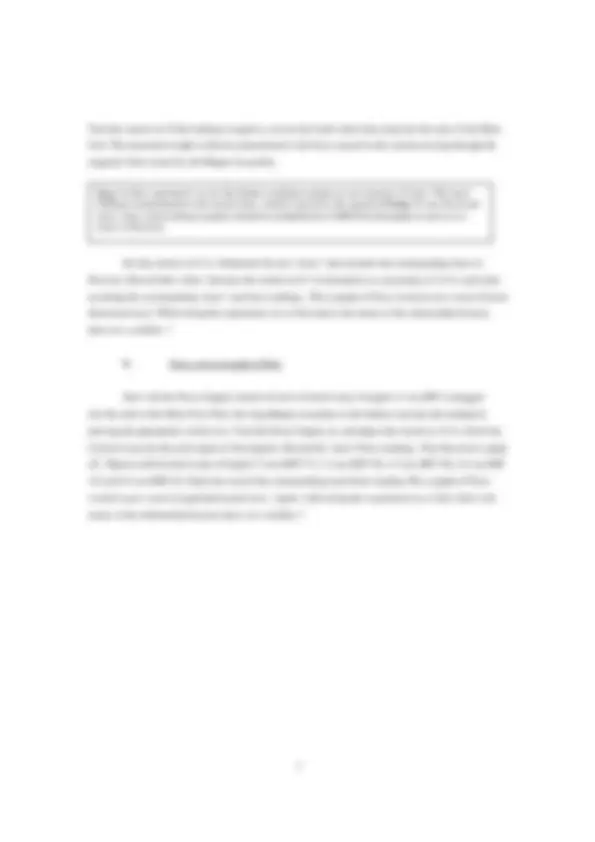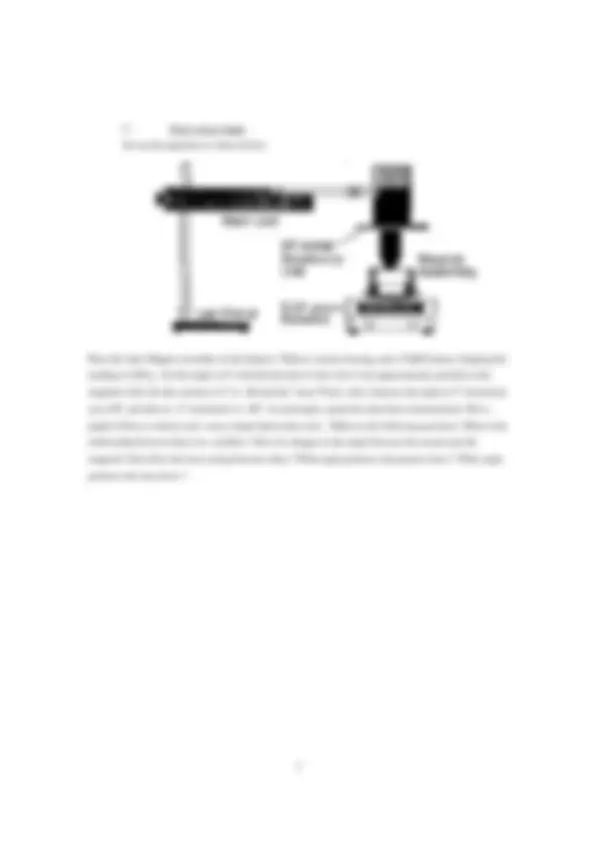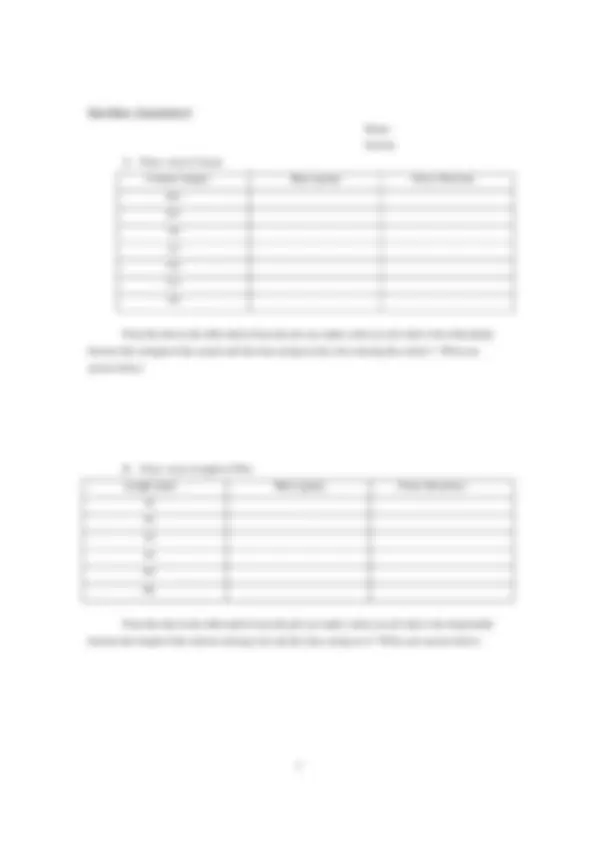





Study with the several resources on Docsity

Earn points by helping other students or get them with a premium plan


Prepare for your exams
Study with the several resources on Docsity

Earn points to download
Earn points by helping other students or get them with a premium plan
Community
Ask the community for help and clear up your study doubts
Discover the best universities in your country according to Docsity users
Free resources
Download our free guides on studying techniques, anxiety management strategies, and thesis advice from Docsity tutors
Material Type: Lab; Class: College Physics Lab II; Subject: Physics; University: Central Michigan University; Term: Unknown 1989;
Typology: Lab Reports
1 / 7

This page cannot be seen from the preview
Don't miss anything!




Experiment 9 Magnetic Force on a Current Carrying Wire
Equipment: Electronic balance, Power supply, Ammeter, Lab stand
Supplies: Current Loop PC Boards, Magnet assembly (long and short), Current Balance Accessory Unit.
A current-carrying wire in a magnetic filed experiences a force that is usually referred to as a magnetic force. The magnitude and direction of this force depend on four variables: the magnitude of the current ( i ), the length of the wire ( L ), the strength of the magnetic field ( B ), and the angle between the field and the wire ( f ). The magnetic force cane be described mathematically by the vector cross product:
→ → →
or in scalar terms
where f is the angle between the directions of
→
→
→
→ →
→
plane defined by vectors
→
→
If a wire is not straight or the field is not uniform, we can imagine the wire broken up into small straight segments and apply the above equation to each segment. The force on the wire as a whole is then the vector sum of all the forces on the segments that make it up. In using the above equation bear in mind that there is no such thing as an isolated current-carrying wire segment of length L. There must be always a way to
introduce current into the segment at one end and take it out at the other end. In the present experiment we will vary three of the variables in the above equation: the current, the length of the wire, and the angle between the wire and the magnetic field. The force on the wire will be measured with an electronic balance.
Procedure - Experiment 9
A. Force versus Current
Use a Current Loop of length 6.4 cm (#SF 41) and plug it into the ends of the Main Unit, with the foil extending down. Connect the Power Supply and Ammeter as shown in the Figure below.
Place the long Magnet assembly on the balance and tare the reading by pressing the appropriate switch on it. This subtracts the weight of the Magnetic assembly, so only the force caused by the current will be measured. Position the Lab stand so the horizontal portion of the conductive foil on the Current Loop passes through the pole region of the magnets as shown below. The Current Loop should not touch the magnets.
C. Force versus Angle Set up the apparatus as shown below.
Place the short Magnet assembly on the balance. With no current flowing, press TARE button, bringing the reading to 0.00 g. Set the angle to 0o^ with the direction of the coil of wire approximately parallel to the magnetic field. Set the current to 2.5 A. Record the “mass”/force value. Increase the angle in 5 o^ increments up to 90o^ , and then in –5o^ increments to –90o. At each angle, repeat the mass/force measurement. Plot a graph of Force (vertical axis) versus Angle (horizontal axis). Think on the following questions: What is the relationship between these two variables? How do changes in the angle between the current and the magnetic filed affect the force acting between them? What angle produces the greatest force? What angle produces the least force?
Data Sheet - Experiment 9 Name: Section: A. Force versus Current Current (Amps) Mass (gram) Force (Newton)
From the data in the table and/or from the plot you made could you tell what is the relationship between the strength of the current and the force acting on the wire carrying the current? Write you answer below:
B. Force versus Length of Wire Length (mm) Mass (gram) Force (Newtons) 12 22 32 42 64 86
From the data in the table and/or from the plot you made could you tell what is the relationship between the length of the current-carrying wire and the force acting on it? Write your answer below: